Functional fitness is a term that has gained popularity in recent years, but what exactly does it mean?
In short, functional fitness is a method of training that prepares the body and your muscles for real life movements and daily activities you might do at home, at work or on the sports field.
This type of training emphasises the importance of building balanced strength and flexibility across your whole body, rather than targeting specific muscles. By focusing on functional fitness, you can improve your physical health, overall well-being and quality of life.
After a decade and more of hypertrophy training, I’ve recently switched to functional fitness at a gym in Manchester. And guess what? I love it! This blog post will dive deeper into the concept of functional fitness, its benefits, the essential exercises and how you can incorporate it into your training.
Contents
- 1 What is functional fitness?
- 2 Core components to functional fitness
- 3 Benefits of functional fitness
- 4 Types of functional fitness
- 5 Essential functional fitness exercises
- 6 Programming a functional fitness routine
- 7 Functional fitness vs strength training
- 8 Functional fitness for specific goals
- 9 Wrap up on functional fitness
What is functional fitness?
Functional fitness is a type of training that aims to improve an individual’s ability to perform everyday activities effectively and efficiently. It focuses on building strength, flexibility, endurance and balance through exercises that replicate movements necessary in the real world. These core movements include squatting, pulling, pushing, hinging and moving loads.
Unlike traditional, muscle-building workouts that isolate specific areas of the body, functional fitness emphasises the importance of training multiple muscle groups with compound lifts, as this is how our bodies function in daily life the majority of the time. This form of exercise promotes coordinated muscle function and endurance.
Functional fitness is a broad term that encompasses a wide range of activities, from yoga to intense CrossFit workouts and everything in between. The versatility of functional fitness means that there’s something for everyone, regardless of their fitness level or goals.
The key principles of functional fitness include using more natural movements, free weights, barbells, kettlebells and bodyweight exercises to engage multiple muscle groups and joints. By limiting machine work and guided lifts, functional fitness prepares the body for real-world challenges and scenarios.
It’s important to say that machine work and hypertrophy training has its place if you want to build aesthetic muscle effectively. There are countless scientific studies and reviews to back this up. But this type of training involves going after a different goal.
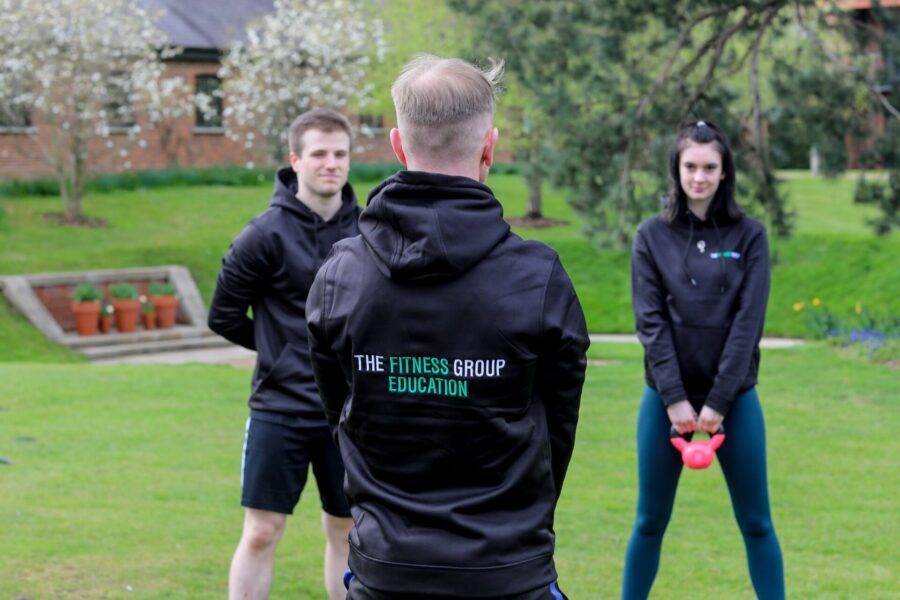
Core components to functional fitness
Functional fitness is made up of a number of core components that work together to create a well-rounded body and improve overall physical performance. The main areas of functional fitness include:
Mobility and flexibility – Mobility refers to the ability to move freely and easily, whilst flexibility is the ability of your muscles and joints to stretch through a full range of motion. Improving mobility and flexibility through functional fitness can help reduce the risk of injury and enhance performance in sports and daily activities. Do you want to be able to squat down and play on the floor with your children or grandchildren? You need good levels of mobility and flexibility.
Strength and power – Strength refers to the ability of your muscles to generate force with power meaning you can generate that force quickly. These form a major part of functional fitness exercises. Movements such as deadlifts and box jumps are all about strength and power and have clear crossovers into everyday life.
Stability and balance – Stability is the ability to maintain control of your body position, whilst balance is key when stationary or moving. Functional fitness exercises that challenge stability and balance include single-leg movements and unilateral exercises that involve one side of the body.
Endurance and stamina – Good endurance means you can sustain certain levels of physical activity for an extended period of time even when you’re tired. Stamina is similar but refers to the ability to maintain high levels of energy and mental focus during prolonged physical activity. Functional fitness workouts that incorporate high-intensity intervals, circuit training and cardiovascular elements improve both endurance and stamina.
Coordination – Coordination helps you to use multiple body parts together at the same time. This refers back to the core element of functional fitness which replicates movements in the real world. There aren’t too many instances in real life where you use a muscle in isolation. Coordination supports smooth and efficient movements.
Benefits of functional fitness
Functional fitness offers a wide range of benefits that can positively impact both your physical and mental well-being. Some of the key benefits include:
Increased strength and power – Functional fitness exercises that focus on compound movements and progressive overload can lead to significant improvements in overall strength and power.
Improved cardiovascular health – High-intensity functional training can provide a challenging cardiovascular workout, leading to improved heart health and increased endurance.
Makes daily activities easier – By training your body to perform natural movements efficiently, functional fitness can make everyday tasks, such as carrying bags, lifting your children and climbing up the stairs, feel much easier.
Better motor function – Studies have shown that intense interval functional fitness can improve motor function, which is essential for maintaining independence and quality of life as we get older.
Better conditioning – Functional fitness workouts often combine strength training and cardio, resulting in improved overall physical conditioning. Combine this with a good, healthy diet and you’ll see improvements in body composition too.
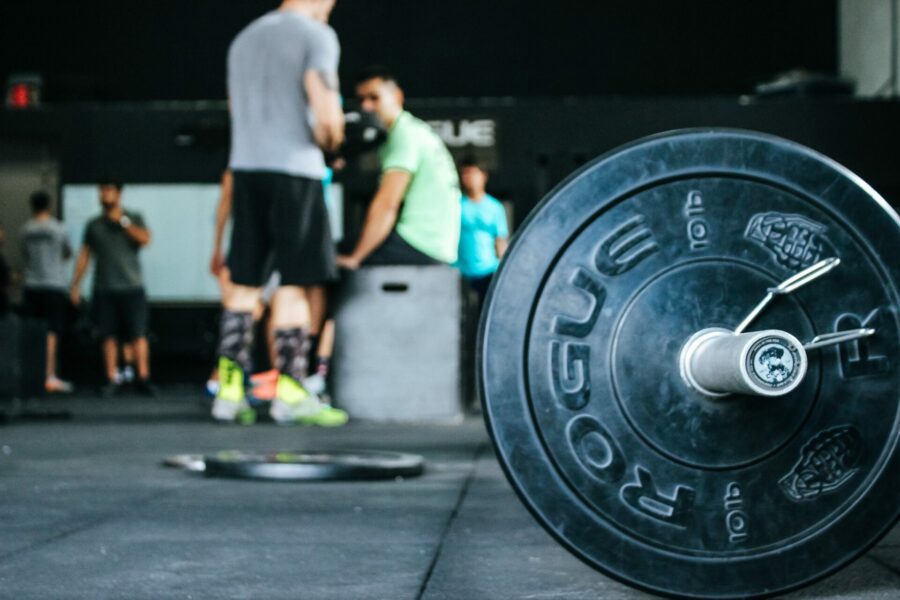
Improved endurance – Circuit-style functional fitness workouts can help build muscular endurance, allowing you to perform activities for longer periods without getting tired.
Improved balance – Functional fitness exercises often challenge balance by training the body in multiple planes of motion, leading to better stability. In the real world, this reduces the risk of falls and injuries.
Core stability – Many functional fitness exercises incorporate the core muscles, which leads to improved spinal stability and posture.
Reduced risk of injury – By training your muscles to work together efficiently and improving overall body awareness, functional fitness can help reduce the risk of injuries in daily life and sports.
Reduces stress – Engaging in regular functional fitness workouts can help reduce stress and improve overall mental well-being.
Social connections – The majority of functional training takes place in group settings. This is really beneficial for building social connections and making friends. Going through something tough together, quickly builds mutual respect and acceptance.
Great for older people – Functional fitness has been shown to have positive impacts on muscle mass, strength, cardiorespiratory capacity, flexibility, balance, cognition and cardiovascular health in older people.
Makes you feel good – Functional fitness can lead to increased neurotransmitters and feel-good hormones. It’s been shown to give you a sense of accomplishment, boost mood and improve self-confidence.
Types of functional fitness
Functional fitness spans a broad spectrum of activities, training styles and methods. Each has its own unique focus and benefits but they can all still be described as ‘functional’.
Some popular types of functional fitness include:
- CrossFit – I think CrossFit put functional fitness training on the map. Starting back in 2000, CrossFit is a high-intensity fitness programme that combines elements of weightlifting, gymnastics and cardio to improve overall strength, endurance and conditioning. AMRAPs (as many reps as possible) and EMOMs (every minute on the minute) are all part of the CrossFit language. You never know what’s coming up in CrossFit training with the eventual aim of preparing your body (and mind) for any scenario. It really is a true test of all things fitness.
- Strength and conditioning – S&C is a comprehensive training approach that focuses on improving performance through a combination of resistance training, plyometrics and cardio-based elements. It’s great for functional fitness (we all need to lift heavy objects at some point!) and one of my favourite types of training. Strength and conditioning programmes were first designed for athletes to improve specific physical attributes, such as power, speed and recovery, to meet the demands of their sport. Nowadays, S&C training is accessible to everyone. Strength training for women has become particularly popular in recent years. If you’re interested in the training side, check out our guide to strength and conditioning jobs.
- Hyrox – One of the newer fitness competitions on the block, but growing massively in popularity. Hyrox challenges participants through a series of running and functional workout stations, designed to test both physical and mental strength. Unlike CrossFit, the Hyrox workout is exactly the same each time: a total of 8 x 1km running, plus 8 workouts of SkiErg, sled push, sled pull, burpee broad jumps, rowing, farmers carry, sandbag lunges and wall balls. Read more on our guide to Hyrox.
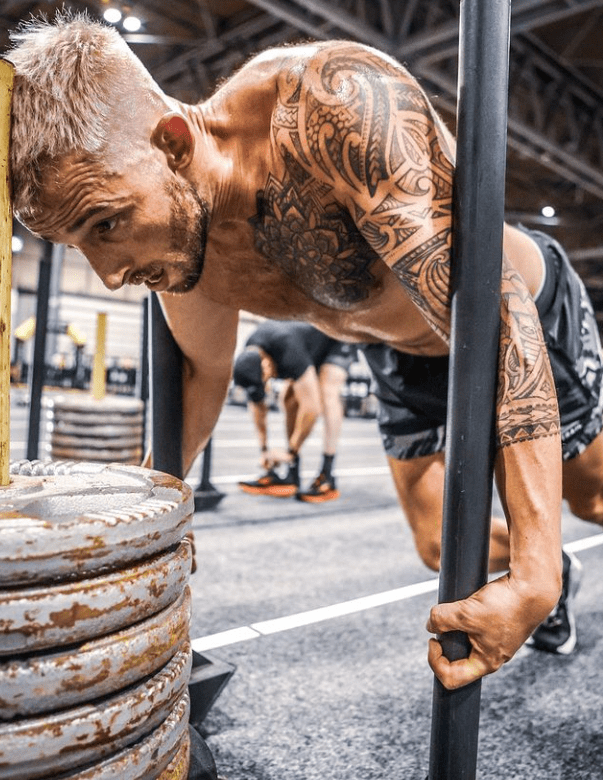
- High-Intensity Interval Training – Also known as HIIT, or sometimes know High Intensity Functional Training (HIFT), is a training method that involves short bursts of high-intensity exercises followed by brief rest periods. It’s similar to circuit training with the aim of getting you working hard and getting your heart rate up to improve cardiovascular health.
- Strongman training: Strongman training is a type of functional fitness that focuses on developing raw strength, power and endurance. It focusses on non-traditional exercises inspired by the feats performed in strongman competitions. These exercises often involve lifting, carrying and moving heavy, awkward objects like atlas stones, logs and tires. Strongman training challenges the entire body and requires a high level of mental toughness, making it an excellent option for those looking to push their limits and develop functional strength that transfers to real-world activities. It’s also a seriously inclusive type of training.
- TRX – TRX is a suspension training system that uses bodyweight exercises to improve strength, balance and flexibility. TRX exercises can be easily adjusted to suit different fitness levels and goals. Read more on TRX qualifications here.
- Kettlebell training – A versatile and effective form of functional fitness that uses kettlebells to build strength, power and endurance. Kettlebell exercises often involve compound movements that engage multiple muscle groups simultaneously, such as kettle swings, lunges, squats and presses. Find out kettlebell instructor page here.
- Yoga and Pilates – Whilst not typically associated with functional fitness, both yoga and pilates can be considered functional training methods as they emphasise body awareness, core stability and flexibility. These practices can help improve posture, balance and overall body control, which are essential components of functional fitness. Incorporating elements of yoga and pilates into a functional fitness routine can help create a well-rounded, balanced approach to physical conditioning. Read how pilates is good for men here.
Essential functional fitness exercises
Functional fitness exercises are designed to train your body for real-world activities by mimicking the movements you perform in daily life. Here are some essential functional fitness exercises that can help you build strength, improve mobility and boost overall physical performance. We’ve split them into the most important basic movement categories.
Squat – Fundamental Functional Fitness Exercise
The squat is a fundamental functional movement that targets the lower body and core. Muscles activated include the quadriceps, hamstrings, glutes, abs, lower back and stabilising spinae erectors. Squatting can take various shapes and forms, performed with weight load in a variety of positions.
Squat exercises:
- Barbell back squat
- Front squat
- Overhead squat
- Goblet squat
- Split squat
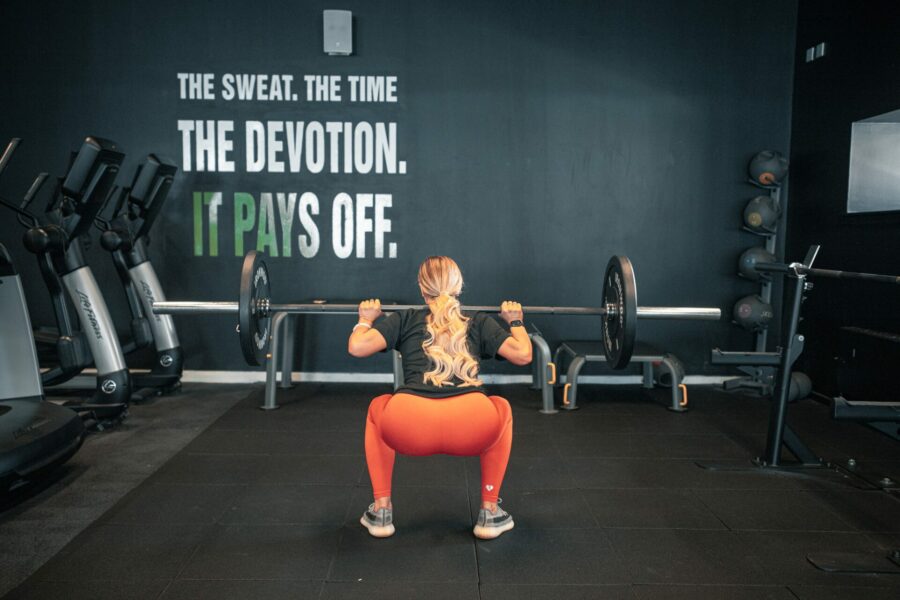
Hinge Exercises – Functional Fitness Exercises
The hinge movement refers to the hip-hinge motion. Hinge exercises primarily target the rear of your body, otherwise known as the posterior chain. Key muscles here include the hamstrings, glutes, calves, lower back and upper back.
A core hinge move, and an essential functional fitness exercise, is the deadlift. Often called the king of strength exercises, the deadlift will make you stronger and prepared for lifting objects from the ground in the real world.
Hinge exercises can be performed with barbells, dumbbells, kettlebells or just with your bodyweight.
Hinge exercises
- Standard barbell deadlift
- Romanian deadlift
- Good mornings
- Kettlebell swings
- Hip thrust/glute bridge
- Power clean
Push – Functional Fitness Push Exercises
Pushing movements are central in everyday life. Throwing a ball, lifting something overhead, pushing yourself out of the side of a pool are all real world examples that pushes something away from your body.
Push exercises target the upper body, predominantly focussing on the chest, shoulders and triceps. When training push exercises, they tend to be split into horizontal pushes, such as the bench press, and vertical pushes, such as an overhead press. It’s important to train both with a variety of resistance methods.
Push exercises
- Bench press
- Overhead shoulder press
- Press ups
- Wall balls
- Dips
- Clean and press
Pull –
Functional Fitness Pull Exercises
Just like pushing, pull is an essential everyday movement to bring items and objects towards you. Pulling does involve your legs as you need to be securely anchored to the floor before performing a pull, but the key upper body muscles involved in pulling include the back, biceps, trapezius and rear shoulder muscles.
Again, like with push movements, pulling exercises can be split into horizontal pulls, like bent over rows, and vertical pulls, like a sled pull. The deadlift can be classed as a pull too.
Pull exercises
- Bent over row
- Pendlay row
- Pull up (overhand grip)
- Chin up (underhand grip)
- Deadlift
- Pullover
- Cleans
- Sled pull
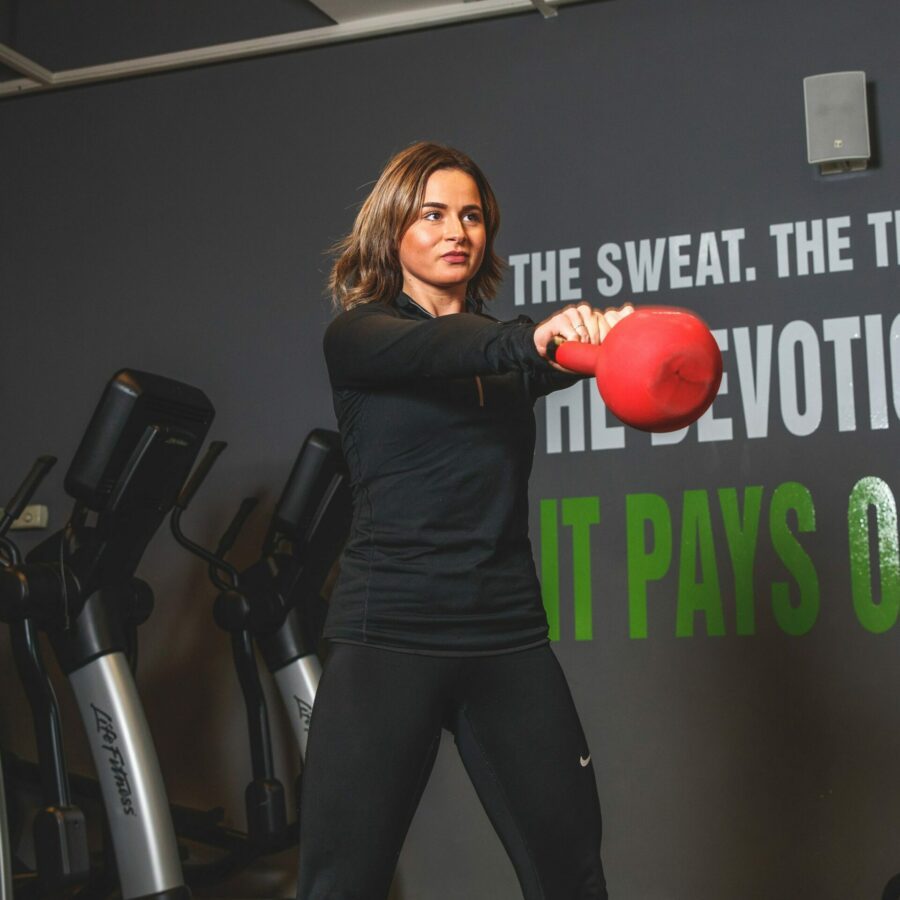
Other key exercises
There are a range of other essential functional fitness exercises that crossover many of the basic movement patterns above.
One of my favourites is the loaded carry, which involves carrying a weight whilst walking. These are a fantastic, truly functional fitness movement. Because you are moving and carrying a weight, a loaded carry challenges your grip strength, core stability and overall endurance. Examples include farmer’s walks and waiter’s walks.
Some of key functional fitness exercises include walking lunges, step-ups, box jumps and Turkish get-ups. These are all compound movements incorporating different muscle groups to help you build a strong, capable body that is better prepared to handle the demands of daily life.
Key exercises:
- Farmer’s walks
- Waiter’s walks
- Walking lunge
- Step ups
- Box jumps
- Turkish get ups
- Burpees
Programming a functional fitness routine
When programming a functional fitness workout, it’s essential to incorporate exercises that target all the core components of functional fitness.
When structuring your workouts, aim to include a variety of exercises that challenge different muscle groups and movement patterns. A well-rounded functional fitness programme should include a mixture of compound exercises that hit your whole body across different sessions, as well as some accessory work that’s muscle group specific to complement the multi-joint core movements.
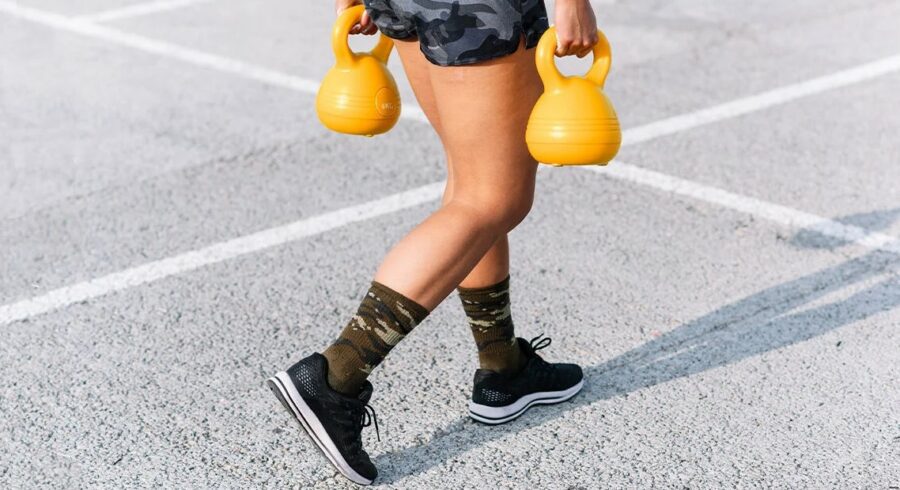
To create an effective functional fitness programme, start by assessing your current fitness level and setting realistic goals. Consider working with a qualified functional fitness coach or trainer who can help you design a programme that is tailored to your specific needs and abilities.
As you progress in your functional fitness journey, gradually increase the intensity and complexity of your workouts. This can involve adding more weight to your exercises, performing more advanced variations of exercises, or increasing the number of reps or sets.
Remember to listen to your body and prioritise proper form and technique over lifting heavy weights or performing high-intensity workouts.
If you’re interested in becoming qualified yourself, check out our range of CIMSPA recognised personal training courses. You don’t need any previous qualifications to start on the Level 2 Gym Instructor course and you can eventually go on to achieve a great salary – see our guide on how much do personal trainers make.
Functional fitness vs strength training
Whilst functional fitness and strength training may seem similar, there are some key differences between the two approaches.
Strength training typically focuses on isolating specific muscle groups and building maximal strength in core lifts like the bench press, squat and deadlift. These are all great functional fitness exercises too. However, strength training often involves more machines and single-joint accessory work that may not necessarily mimic the movements we perform in daily life.
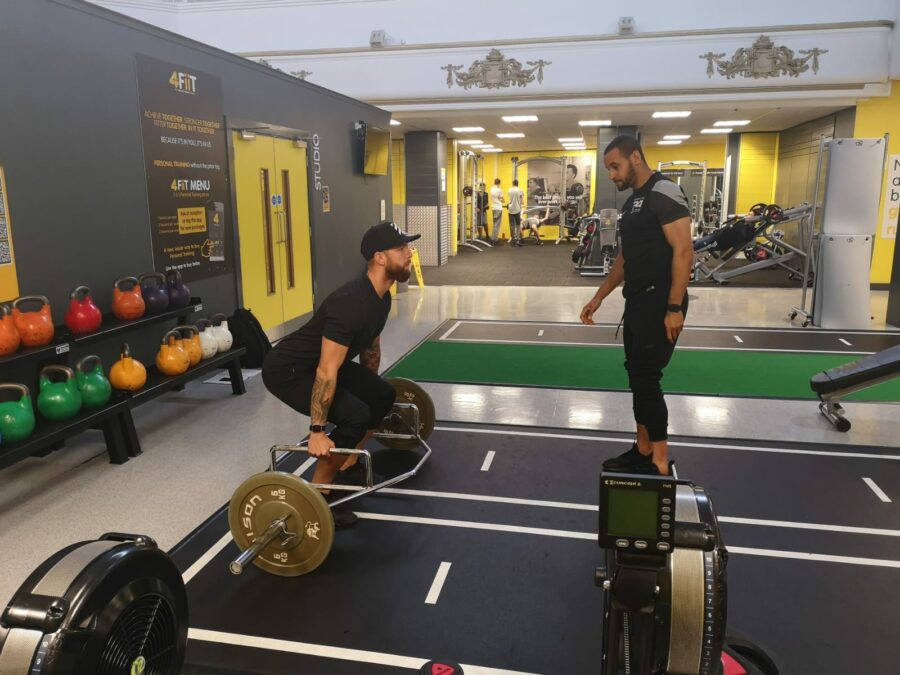
As you’re read, functional fitness emphasises training the body as a whole, through multiple movement planes to improve overall physical performance through exercises that simulate real-world movements. Muscular endurance, mobility and coordination are all important here. It’s this focus on transferable skills that tends to set functional fitness apart.
That being said, strength training and functional fitness are not mutually exclusive. Many functional fitness programmes include central elements of strength training, such as heavy lifts and progressive overload, to help build the strength and power necessary for optimal physical performance.
Functional fitness for specific goals
The brilliant thing about functional fitness is that it can be tailored to meet a wide range of specific goals. Whether you’re focussing on weight loss, want to get strong or are conscious about staying healthy and agile as you age, functional fitness can play an important role.
Functional fitness for weight loss – Functional fitness workouts that combine strength training and high-intensity cardio can be highly effective for weight loss. Compound exercises and resistance training as a whole help you burn a tonne of calories whilst also building lean muscle mass. This is exactly what you want to positively change your body composition.
Functional fitness tends to take place in group settings, which can be excellent for motivation, inspiration and support to stick with something over the long term.
As with any weight loss or weight gain for that matter, diet and nutrition have an integral role in what happens to your appearance.
Functional fitness for athletes – Athletes can benefit from functional fitness by working exercises that mimic the specific demands of their sport. For example, a basketball player might focus on squats to improve their leg strength and plyometric exercises, like box jumps, to improve their explosiveness. Rugby players will train the whole body, including exercises like the bench press and sled push to build physical strength in key parts of the game.
Functional fitness for older people – As we age, it becomes increasingly important to maintain our strength, balance and mobility. These core skills help you to perform daily activities with ease and reduce the risk of falls and injuries.
Functional fitness exercises like squats, step-ups and simple overhead pressing helps older adults maintain their independence and quality of life well as they hit the grandparent era.
No matter what your specific goal may be, functional fitness can be a valuable tool for improving your overall health, fitness and performance. By working with a qualified coach or trainer, you can develop a customised programme that is tailored to your unique needs and goals, helping you achieve optimal results in a safe and effective way.
Wrap up on functional fitness
Functional fitness is a comprehensive approach to physical well-being that offers tonnes of benefits for people of all ages and fitness levels. When performed over time, functional fitness can help improve strength, endurance, balance and overall health, as well as supporting you to achieve personal goals.
If you’re passionate about health and fitness and want to help others experience the benefits of functional fitness, you might want to consider a career as a personal trainer or fitness instructor. At The Fitness Group we offer a range of CIMSPA-recognised personal training courses, including our Level 2 Gym Instructor course, which requires no previous qualifications. Our specialist courses, such as the pre and post natal, instructing kettlebell course and strength and conditioning personal trainer courses, can further enhance your expertise and enable you to cater to specific client needs.

